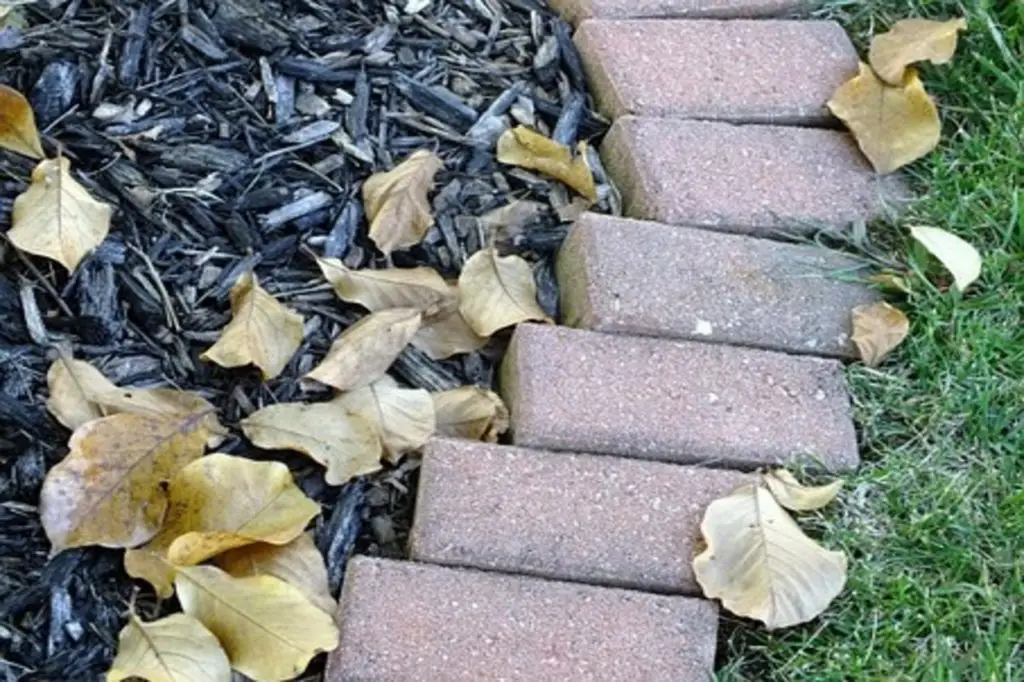A good amount of mulch blows away from your garden when winds and storms strike. That has put up a cost of replacing the mulch on the garden and polluting the garden areas. It is better to look for ways to keep the mulch from blowing away rather than waiting to replace it.
But, how to keep mulch from blowing away?
You keep mulch from blowing away by edging the garden and choosing a heavy mulch that can’t be blown away easily by wind. You can get your mulch to stick together by applying a mulch lock. Mulch bond is a compound formulated to make mulch stable and intact on the ground.
Here, I discuss the various ways to keep mulch from blowing away from the garden.
Also Check – How To MAke Mulch
How To Keep Mulch From Blowing Away
Your mulch, depending on where you have it can be blown away by a strong wind. There are several ways of preventing such incidences, even in the occurrence of the strongest winds. How?
To keep mulch from blowing away:
- Choose the Right Mulch for Your Garden
All mulches can be easily swept away by the wind, but some are more capable of straying than others. Here are some types of mulch and their capability to float.
- Nuggets and chips: Bark nuggets and wood chips are heavier and less likely to float even in heavy storms. Remember to apply larger chips that are heavier.
- Shredded Mulch: This mulch is a good choice during a storm since the wood particles entangle and aren’t easily swept away. Look for hardwood mulches since they’re heavier than the softwood ones.
- Pine straw mulch: For me, this is the best mulch option in a stormy season. The needles help the mulch to stay put by intertwining, making it an option even on a slope.
Scan through those mulch types and choose a type that’s suitable for your garden.
- Edging the Garden
Edging is the only way that can help to keep your mulch entirely in your garden during a storm. The edge needs to be high enough to contain the mulch.
Here are some edging ideas:
- Plant edging: Edging plants such as Monkey Grass create a superb border when planted tightly at the end of the garden. They can also assist in slowing down the wind.
- Trenching: Create a small trench (3-4 inches deep) at the end of your flower bed or garden. The trench helps to catch any eroded mulch before it lands on your driveways or grass. It’s therefore easy to rake the mulch back to the garden.
- Pine Straw Edging: Gardeners prefer covering their garden with a one-foot row of pine straw edges to trap floating nuggets.
- Landscape Edging: Use a metal, stone, or plastic edge that keeps the mulch in place. Ensure the landscape edge is high enough to hold the mulch.
- Edging with mulch: You can form a low barrier of heavier mulch around your garden to protect the light mulch.
- Removing Plastic Sheeting and Landscape Fabrics from your Garden
For inclined gardens with a higher risk of washing out your mulch, remove any landscape fabrics or plastic sheeting. Plastic sheeting and fabrics create a slick surface that allows all your mulch to slide off during a storm.
You can use plastic sheeting and landscape fabrics for weed control but not along a slope. Instead, the mulch itself can help to minimize weeds.
- Applying Mulch in Layers
If you throw mulch loosely on your garden, the mulch is more easily swept away by a slight wind. That is because it easily slides away from its intended spot since it does not hold firmly on the ground.
Instead, apply thin layers of mulch to increase its compactness down the slope other than growing the mulch at once.
What Is Mulch Bond?
Mulch bond is a special compound that keeps your mulch intact regardless of where you’ve installed it. It’s especially recommended for slopy lands and areas that experience strong winds. Mulch bond has several pros:
- It substrates to drain into the soil and allows breathing.
- It prevents rain, mowers, wind, wildlife, pets, and other mulch blowers from moving your mulch after installation. Mulch bond enhances and sustains the natural appearance of your mulch. It’s also eco-friendly and safe for aquatic life.
- Mulch bond is easy to apply on the soil and takes a short time of 24-48 hours to reach full bond.
- It also helps to reduce maintenance costs for your garden.
- Mulch bond prevents the mulch from polluting your driveways, walkways, and ponds from being with mulch.
- Also, it can help to prevent erosion, dust, light stones, and gravel.
- It stays effective for a longer time, therefore, saving on purchase and installation costs.
How Do You Apply Mulch Lock?
Firstly, mulching-lock is a milky liquid sprayed on mulches and other light grounding materials to compact them. It works well on slopes and flat grounds and also aids in preventing soil erosion. It comes in two sizes, a 1.5 gallon ready to use and a 64 fl oz Concentrate.
To apply the 1.5 Gallon mulch lock, shake it vigorously and pump it before spraying it directly on your garden. For the 64 fl oz concentrate, you put the mulch lock in a pump, shake and pump it before spraying.
You can apply it on mulch, pebbles, leaf piles, pine straw, sand, shells, wood chips, and gravel.
How Do You Get Mulch to Stick Together?
If you’ve had a case where weed is constantly misplacing your mulch, the following would work in sticking or keeping it together:
- Applying mulch lock spray: Regardless of the mulch type you’re using, mulch-lock spray can stick it together for at least, 12 months. It’s effective in pebbles, pine straw, rubber, and gravel among other mulches.
How Do You Use Mulch Lock Concentrate?
You use mulch lock concentrate by spraying it. So, spray the concentrate directly on your mulch to put it in place for more than a year. Consequently, it holds all types of mulch, and other ground covers instantly. However, shake and pump the mulch lock well before spraying it on the mulch to make it more effective. Shaking and pumping help to cover up to 1,5OO sq feet of your garden.
After shaking, exerts high pressure on the container, so you may be careful when opening it. It may produce a pop sound and splash on your face if opened at once.
Mulch lock concentrate works the best under 55 degrees Celsius with calm air. So, make sure that there’s no rain in the next 24 hours after applying Mulch Lock Concentrate. Remember, the process doesn’t prohibit water and air into the soil despite locking mulch.
How Do You Secure Mulch On a Slope?
You secure mulch on a slope by:
- Terracing your sloppy areas: This creates smaller and flatter areas that can hold the mulch in place. Terraces also help to create more farming space on your derelict land.
- Mulch by bird netting: The net is held in place by landscape fabric staples and helps prevent the mulch from blowing downslope. This method is essential where the slope is too steep to be terraced.
- Use a net: It allows soil aeration and drainage.
FAQs
Does Mulch-Lock Work?
Yes, when applied under the right conditions, mulch lock works excellently. Many who bought the mulch lock and sprayed it at the correct temperatures with a calm air commended it.
Also, make sure you apply enough mulch lock on the mulch to increase its efficiency. Give it adequate time to dry before trying it out with a blower.
How Long Does It Take Mulch-Lock To Dry?
Mulch Lock takes 24 to 48 hours to dry up. This time range depends on the environmental conditions during the time of application. When sprayed on a hot day, the Mulch Lock may take as low as 24 hours to dry.
You may not spray the Mulch Lock on a rainy day or when you forecast rain in the next 24 hours. Why? Rain may wash away all the Mulch Lock making it less effective.
How Do You Keep Bark Mulch From Blowing Away?
By laying mulch netting on top of a wood chip layer, you keep bark mulch from blowing away. Approximately 2 – 4 inches of wood chips are enough and effective. However, this is most suitable when applied in landscapes.
After application, use a rake to spread the bulk mulch.
Wrapping Up
Keeping your mulch safe from the wind and storms can guard you against additional purchase and application costs. It can also help you to ensure neatness on your paths and ponds.
You can stick your mulch on the ground by using an edging material and terracing the slopes. Pile your mulch in layers to increase its compactness with the soil. Also, add a mulch lock to your mulch during sunny days to stick your mulch faster.
With these techniques, your mulch can stand the most formidable storm without blowing away.


